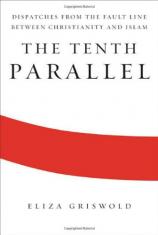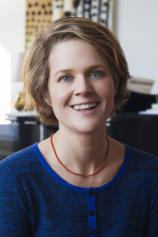Reading Group Guide
Discussion Questions
The Tenth Parallel: Dispatches from the Fault Line Between Christianity and Islam

1. Griswold frequently quotes both the Quran and the Gospel. What is your view of sacred texts: Do you see them as wisdom literature, divine words, accurate accounts of history, collections of myths that reflect humanity’s experience with God, or something else altogether? To what extent are sacred books at the heart of the conflicts taking place along the tenth parallel?
2. What did you learn about the fragile ecosystem of the tenth parallel by reading about Dr. Amin al-Amin, the chair of Nature Trust International and a champion of environmentalism in Nigeria? In the wake of the Biafran War, in which the predominantly Christian southeast unsuccessfully attempted to secede from the mainly Muslim north during the 1960s, will the environmental crisis heal or exacerbate Nigeria’s social crisis?
3. Griswold notes that for six hundred years prior to the Crusades, Christians and Muslims interacted peacefully in Sudan. By the nineteenth century, David Livingstone’s statue captured the climate of colonization: “Christianity, Commerce and Civilization.” How does this history help us to understand contemporary strife in Sudan?
4. With virtually no oil and a government besieged by warlords who have run off most humanitarian aid workers from the West, what does Somalia have to offer its people?
5. Griswold describes the Walisongo school massacre, perpetrated by Catholics in 2000, and the Dutch legacy of colonization as factors contributing to anti-Christian sentiment in Indonesia. Yet some residents distrust Sharia law also, observing that it is enforced more harshly among impoverished communities than in prosperous ones. Can religion and justice ever be equated in Indonesia?
6. The colonization of Malaysia was marked by rubber plantations (generally worked by Indians), tin mines (generally worked by the Chinese), and other profit centers drawn from natural resources. Despite the British mandate for equal rights (regardless of ethnicity) upon decolonization in 1946, the Muslim Malay majority won a constitutional right to religious and ethnic superiority. Chapter 26 concludes with Edo’s thoughts on humanity’s connectedness to the earth --- a connection that transcends religion or ethnicity. What would it take for his vision to be realized, not only in Malaysia but throughout the tenth parallel?
7. Griswold notes that the Philippines remains overshadowed by U.S. influence, despite gaining independence at the end of World War II. How has this shaped the particular types of Islamic schisms seen in the Philippines, such as the schism between those who view Islam as a connection to a culturally powerful legacy and those who seek “martyrdom” for the prospect of oil? Is the Philippines’s historical connection to America an asset in the twenty-first century?
8. How do Asia’s struggles in the tenth parallel compare with Africa’s? What accounts for these differences? How does the more recent spread of Islam in Asia compare to the earlier tactics that brought it to northern Africa?
9. If a nation possesses valuable natural resources, what determines whether the wealth will benefit all classes of people or lead to corruption that concentrates wealth in the hands of a few? Does religion help or hinder in the fight against corruption?
10. Griswold describes the Reverend Franklin Graham’s passion for building relief programs throughout the world. His motivation is not only to ease suffering on earth, however; he believes that non-Christians will experience eternal damnation. Would such relief organizations be more successful if they did not attempt to convert nonbelievers, or is faith an essential component in the most successful relief organizations? What differences did you detect between Christian and Islamic relief organizations?
11. Chapter 9, part of the section covering Sudan, describes early attempts to chart the globe, including definitions of the tenth parallel as the Torrid Zone. Despite the fact that African kingdoms flourished there, wise men ranging from Aristotle to Arab philosophers and Jewish scholars considered this part of the map to contain no “worthwhile” inhabitants. What accounts for such widespread disdain?
12. Discuss the harrowing experience of the missionaries Gracia and Martin Burnham. What enabled Gracia to pray for her captors? How can we understand the tremendous sacrifice her husband was willing to endure for Christ? How is her understanding of Christianity very different from that of the Americans who attend her lectures but have never seen the world?
13. How was Griswold’s identity shaped by being the daughter of an Episcopal clergyman?
14. What do you predict for the future of the tenth parallel? Is religion interfering with peace, or is it the best hope for peace in these regions?
15. What human experiences are illuminated in both The Tenth Parallel and the author’s book of poems, Wideawake Field? How does her perspective as a poet affect her skill as a journalist?
The Tenth Parallel: Dispatches from the Fault Line Between Christianity and Islam
- Publication Date: August 17, 2010
- Hardcover: 336 pages
- Publisher: Farrar, Straus and Giroux
- ISBN-10: 0374273189
- ISBN-13: 9780374273187








